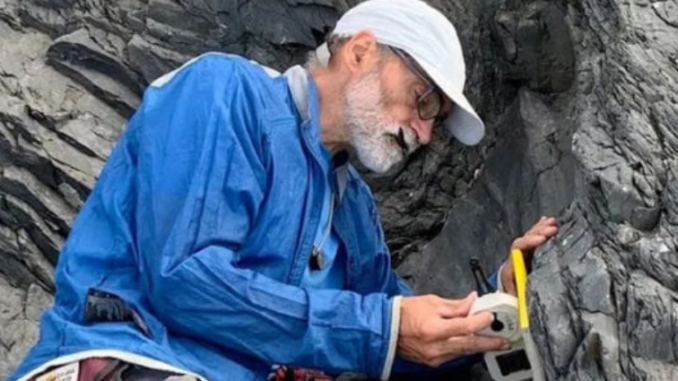
Experts Say Yellowstone Eruption Is Just a Sign of Regular Geological Activity, Not the ‘Great Eruption’
in northwest Wyoming, a giant that has been dormant for nearly 70,000 years. The Yellowstone caldera, also known as the Yellowstone supervolcano, in Yellowstone National Park, is both an American tourist icon and a terrifying monster capable of devastating destruction. A source of both awe and fear, the supervolcano has been making headlines recently when the park saw a sudden hydrothermal explosion that damaged a boardwalk and threatened nearby tourists.
In response to public concerns, Jaime Toro, a geology professor at WVU’s Eberly College of Arts and Sciences, explained that the event is simply a reflection of the geological makeup of the area and does not indicate a larger eruption is underway.

The Yellowstone supervolcano sits in a hot spot where molten Earth has condensed into a magma chamber, with the land above rising as the chamber fills and falling as the magma solidifies. Volcanologists have been measuring ground movements for about 100 years, and over the past decade, the volcano has erupted at a higher-than-average rate.
Historically, eruptions from the volcano have spewed toxic gases, volcanic ash, debris, and magma that have covered much of the continental United States — evidence of a previous eruption has been found as far away as Louisiana. Discussions about the supervolcano often include speculation about when Yellowstone will next erupt, an event often referred to as “The Big One.”
While the prospect of a supervolcano eruption is cause for concern, experts don’t see it happening anytime soon, and last week’s eruption was not a sign of impending disaster.
Hydrothermal explosions are the result of steam surging in a confined area of a volcanic system, leading to increased pressure that produces a geyser eruption. These events are largely unpredictable and can be dangerous, with boiling water, steam, mud, and rocks capable of reaching heights of more than 1 mile and radii of up to 2.5 miles, according to the Yellowstone Volcano Observatory.
The recent hydrothermal eruption originated in the park’s Biscuit Basin and launched debris hundreds of feet into the air, damaging the area’s boardwalk and impacting nearby hot springs. Although park visitors were on the boardwalk at the time of the eruption, there were no reports of injuries.
Aside from the seasonal closure of Biscuit Basin, the eruption is not expected to cause any long-term concerns for the park.
“Fortunately, what happened [on July 30] was a spectacular but very small event. It’s nothing to worry about unless you happen to be on the Biscuit Basin boardwalk at the time,” Toro said.
Hydrothermal eruptions occur at Yellowstone every year, but are usually small and located in non-recreational areas of the park, so they don’t get the same attention from the public.
“Most of the evidence of volcanic activity that visitors see at Yellowstone is caused by groundwater interacting with hot rock that covers the magma chamber of the volcano. The water seeps down through cracks and fissures and heats up. … As the water rises, it reduces the pressure of the water below, which evaporates and causes the geyser to erupt,” Toro said. “Some [geysers] erupt at irregular intervals, while some can spend years or decades quietly boiling before erupting.”
Meanwhile, the Yellowstone supervolcano has been dormant and stable for thousands of years, and even its current level of activity does not suggest any potential for an eruption. Currently, the Yellowstone Volcano Observatory expects the park’s only future volcanic events to be hydrothermal eruptions like last week’s and occasional lava flows. “There’s no telling when this might happen again, but as long as the hot spot remains active, Yellowstone will continue to amaze us,” Toro said.
